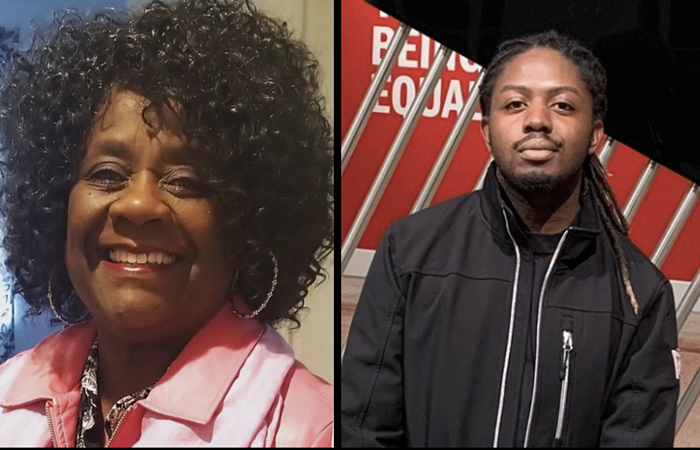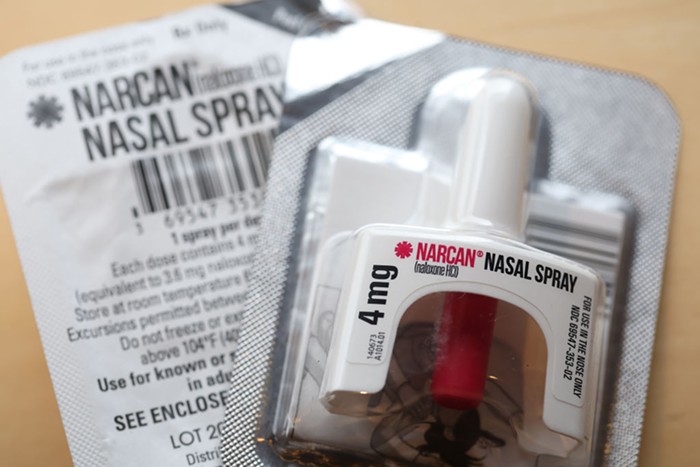Imagine nearly every gallery you've ever been in and, chances are, what sticks out is the lone glaring similarity: uninterrupted white walls. What doesn't always register, in considering the simulacra of the white-walled box, are the more subtle characteristics—from architecture to lighting—that really define an exhibition space and determines how work will look in it. But in Serenade, her first solo show in Portland since 2005, Jacqueline Ehlis turns that relationship on its head, exploiting the New American Art Union's architectural idiosyncrasies as a critical component of her work.
In "Tell of One Thing More Than This," the artist presents five narrow canvases, hung equidistant and painted white to match the gallery's walls. Head on, its contours are traced by shadow, but, as one moves away, its edges appear to simply disappear into the walls. The adjacent "After Hours Red (The Red Corner)" plays off the vertical-slatted balcony that it's hung beneath. In the six steel panels that creep up the corner, a more minimal version of the pattern is recreated, all under the barely perceptible glow of a red light. For Ehlis, it is a conflation of carnal desire and religious passion, referencing red light districts and the krasny ugol, or "red" corner, where red candles and religious icons are commonly displayed in Russian homes. But, for someone who had never visited the gallery before, "After Hours Red" could blend into the space's architecture, unseen.
In "Cinema of the Blushing Skin," which is hung directly next to the gallery's front windows, natural light adds another variable to an already subtle, if dense, installation. Here, a video of 88 photographs that Ehlis snapped at the Venice Biennale is projected on three muted paintings, in which a base of intensely vibrant color has been coated over in gesso. In daylight, the details of the projected images—mostly travel photography and pictures of other artists' work—are washed out and reduced to a ghostly shimmering on the surface of the canvases. Because the projection is barely perceptible, it has the odd effect of drawing viewers in to more closely examine the paintings. Instead of fulfilling their ostensible role as screens (i.e., passive receptors), they begin to actively communicate through subtle texture and the muffled energy of the buried hues: hot pink and highlighter yellow.
Ehlis' work has obvious roots in Minimalism and Op Art, but she applies their forms and concepts in an altogether different way. Namely, she creates a kind of recursive dialogue, in which the tension between exhibited art and exhibition space ensures that the viewer's attention constantly flip-flops between the two.













